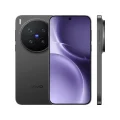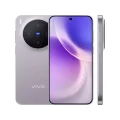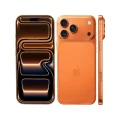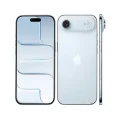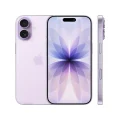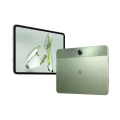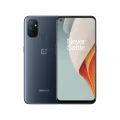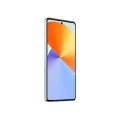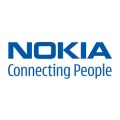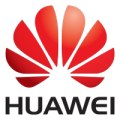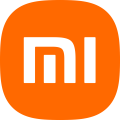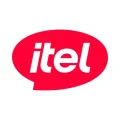- Home
- All Products
- Google Pixel
- Google Pixel 10 Pro
Google Pixel 10 Pro
-
Battery: 4870 mAh
-
RAM: 16GB, 16GB, 16GB, 16GB
-
Storage: 128GB, 256GB, 512GB, 1TB
-
Display: LTPO OLED, 6.3 inches
-
Camera: Rear 50 MP+48 MP+48 MP, and Front 42 MP
-
OS: Android 16, up to 7 major Android upgrades
Full Specifications
Price
| Official | 129999 BDT 16GB/256GB Approx. |
General
| Model | Google Pixel 10 Pro |
| Announced | 2025, August 20 |
| Released | 2025, August 28 |
| Status | Coming Soon |
Design
| Dimensions | 152.8 x 72 x 8.5 mm (6.02 x 2.83 x 0.33 in) |
| Weight | 207 g (7.30 oz) |
| SIM SIM (Subscriber Identity Module) is a small card that contains mobile network subscriber's account information. This allows the phone using the card to attach to a mobile network. The SIM card is most commonly associated with GSM and UMTS mobile networks. Moving a SIM card from one phone to another allows a subscriber to switch mobile phones without having to contact their mobile network carrier. SIM cards can also be used by a phone to store limited amounts of data, such as phone numbers and text messages. |
Nano-SIM + eSIM |
| Colors |
Moonstone, Jade, Porcelain, Obsidian |
Display Specification
| Display Type Display Technology => A number of display technologies and types used in mobile phones => TFT (Thin Film Transistor), IPS (In-Place Switching), OLED (Organic Light Emitting Diode), AMOLED (Active-Matrix Organic Light-Emitting Diode), Super AMOLED (an even advanced version of AMOLED), Resistive Touchscreen (Resistive touchscreens contain two layer of conductive material with a very small gap between them which acts as a resistance), Capacitive Touchsceen (Capacitive touchscreen technology consists of a layer of glass coated with a transparent conductor) | LTPO OLED |
| Size | 6.3 inches, 96.3 cm2 |
| Resolution | 1280 x 2856 pixels, 20:9 ratio |
| Refresh Rate | 120Hz |
| Pixel Density Pixel Density (PPI) is refers to the concentration of pixels on a particular display, measured in pixels per inch (ppi). Pixel density is calculated by dividing the diagonal pixel resolution of a display by its diagonal size, higher pixel density better display quality. | 495 ppi density |
| Display Protection Display Protection => Gorilla Glass is a special alkali-aluminosilicate glass shield with exceptional damage resistance that helps protect mobile displays from scratches, drops, and bumps of everyday use, It is always better to go for a smartphone with Gorilla Glass for that added protection and peace of mind. | Corning Gorilla Glass Victus 2, Mohs level 4 |
| Features |
87.6% screen-to-body ratio HDR10+, 2200 nits (HBM), 3300 nits (peak) |
Platform
| Operating System OS => Every computer system run on a base software called Operating System (OS). Operating System controls all basic operations of the computer (such as smartphone, PDAs, tablet computers and other handheld devices). The Operating System allows the user to install and run third party applications (apps), apps are used to add new functionality to the device. | Android 16, up to 7 major Android upgrades |
| Chipset Chipset is a group of integrated circuits designed to perform one or a more dedicated functions, often with real time computing constraints, Popular smartphones are equipped with more advanced embedded chipsets that can do many different tasks depending on their programming. | Google Tensor G5 (3 nm) |
| CPU CPU (Central Processing Unit) mostly known as processors, CPU processes instructions in order to carry out certain functions that make your device operate properly. Processors are often described as the brain of computers, smartphones and tablets, Smartphones and tablets rely on processors to carry out their every task, Processors are an incredibly important factor in selecting any type of computing device, including your smartphone. | - |
| GPU GPU (Graphics Processing Unit) is a single-chip processor designed to rapidly manipulate and alter memory to accelerate the creation of images in a frame buffer intended for output to a display, This includes things such as lighting effects, object transformations, and 3D motion. | - |
Main Camera
| Camera Setup | Triple |
| Resolution |
50 MP, f/1.7, 25mm (wide), 1/1.31", 1.2µm, dual pixel PDAF, OIS 48 MP, f/2.8, 113mm (periscope telephoto), 1/2.55", dual pixel PDAF, OIS, 5x optical zoom 48 MP, f/1.7, 123˚ (ultrawide), 1/2.55", dual pixel PDAF |
| Features |
Multi-zone Laser AF, LED flash, Pixel Shift, Ultra-HDR, panorama, Best Take, Zoom Enhance |
| Video | 8K@30fps (via cloud-based upscaling), 4K@24/30/60fps, 1080p@24/30/60/120/240fps; gyro-EIS, OIS, 10-bit HDR |
Selfie Camera
| Camera Setup | Single |
| Resolution |
42 MP, f/2.2, 17mm (ultrawide), PDAF |
| Video | 4K@30/60fps, 1080p@30/60fps |
| Features |
HDR, panorama |
Network & Connectivity
| Technology | GSM / HSPA / LTE / 5G |
| Speed | HSPA, LTE (CA), 5G |
| Wi-fi Wi-Fi is a popular wireless networking technology using radio waves to provide high-speed network connections that allows devices to communicate without cords or cables, Wi-Fi is increasingly becoming the preferred mode of internet connectivity all over the world. | Wi-Fi 802.11 a/b/g/n/ac/6e/7, tri-band |
| Bluetooth Bluetooth is a wireless communications technology for exchanging data between mobile phones, headsets, computers and other network devices over short distances without wires, Bluetooth technology was primarily designed to support simple wireless networking of personal consumer devices. | 6.0, A2DP, LE, aptX HD |
| NFC NFC (Near field communication) is a set of standards for smartphones and similar devices to establish peer-to-peer radio communications with each other by touching them together or bringing them into proximity, usually no more than a few inches. | Yes |
| Positioning |
GPS (L1+L5), GLONASS, GALILEO, BDS, QZSS, NavIC |
| FM Radio | No |
| USB | USB Type-C 3.2 |
| 2G Network |
GSM 850 / 900 / 1800 / 1900 |
| 3G Network |
HSDPA 800 / 850 / 900 / 1700(AWS) / 1900 / 2100 |
| 4G Network |
1, 2, 3, 4, 5, 7, 8, 12, 13, 14, 17, 18, 19, 20, 21, 25, 26, 29, 30, 30, 32, 38, 39, 40, 41, 42, 48, 66, 71, 75 - GEHN3 1, 2, 3, 4, 5, 7, 8, 12, 13, 14, 17, 18, 19, 20, 25, 26, 28, 29, 30, 38, 40, 41, 48, 66, 71 - G4QUR |
| 5G Network |
1, 2, 3, 5, 7, 8, 12, 14, 20, 25, 26, 30, 38, 40, 46, 71, 75, 76, 77, 78, 79 SA/NSA/Sub6 - GEHN3 1, 2, 3, 5, 7, 8, 12, 14, 20, 25, 26, 28, 29, 30, 38, 40, 41, 48, 66, 70, 71, 77, 258, 260, 261 SA/NSA/Sub6/mmWave - G4QUR |
Battery
| Battery Type Battery Type => Cell phones run on various kinds of batteries depending on the manufacturer, phone size or shape and features. There are basically four types of cell phone batteries => Lithium Polymer, Lithium Ion, Nickel Metal Hydride and Nickel Cadmium. | Li-Ion (Lithium Ion) |
| Capacity Battery Capacity is a measure (typically in Amp-hr) of the charge stored by the battery, and is determined by the mass of active material contained in the battery. The battery capacity represents the maximum amount of energy that can be extracted from the battery under certain conditions. | 4870 mAh |
| Removable | No |
| Charging |
30W wired, PD3.0, PPS, 55% in 30 min 15W wireless (magnetic), Qi2 Reverse wireless Bypass charging |
| Wireless Charging Wireless Charging (Inductive Charging) uses an electromagnetic field to transfer energy between two objects. This is usually done with a charging station. Energy is sent through an inductive coupling to an electrical device, which can then use that energy to charge batteries or run the device. | Yes |
Multimedia
| Loudspeaker | Yes, with stereo speakers |
| Audio Jack | No |
Storage
| Card Slot Memory Card Slot is a special slot for inserting a memory card. Memory cards allow you to expand the phone's built-in memory, A memory card (sometimes called a flash memory card or a storage card) is a small storage medium used to store data such as text, pictures, audio, and video, for use on small, portable or remote computing devices such as mobile phones, mp3 players, digital cameras. | No |
| Internal Storage Internal Storage is a data storage space (flash memory) mostly used in smartphones, tablets and other electronic devices where operating system, apps, music, photos, videos, files and other user data Is stored. |
128GB 16GB RAM, 256GB 16GB RAM, 512GB 16GB RAM, 1TB 16GB RAM |
Sensors
| Fingerprint | Yes (under display, ultrasonic) |
| Other Sensors | accelerometer, gyro, proximity, compass, barometer, thermometer (skin temperature) |
PROS
- Sleek, manageable design with flagship-quality features—no oversized dimensions
- Advanced AI features that feel practical—Magic Cue surfaces contextually useful info, Camera Coach helps with photo composition
- Exceptional camera system, with ProRes Zoom enhancements and strong low-light performance
- Long-term support, with seven years of updates providing longevity unmatched in the Android ecosystem
- Qi2 wireless charging adds convenience with magnetic accessory support
CONS
- Battery life sees slight dips compared to previous generations—some users note underwhelming endurance
- AI features can feel inconsistent: Pro Res Zoom may deliver artificially altered results; generative tools sometimes overreach.
- Not built for heavy graphics: Great for AI, but not the top choice for GPU-intensive gaming.
- No eSIM support elsewhere was noted, though a single eSIM model was noted in the US.
About the Google Pixel 10 Pro
The Google Pixel 10 Pro represents Google’s flagship smartphone offering for 2025, featuring significant technological advances that position it at the forefront of Android innovation. The Pixel 10 phones are here with the Google Tensor G5 chip and Gemini Nano model, featuring a fresh design with recycled materials and improved displays.
The Pixel 10 Pro features a 6.3″ display, Google Tensor G5 chipset, 4870 mAh battery, up to 1024 GB storage, 16 GB RAM, and Corning Gorilla Glass Victus 2 protection. The display technology has been significantly enhanced, with a maximum local screen brightness of 3,300 nits, Gorilla Glass Victus 2 protection, and an ultrasonic in-display fingerprint scanner.
Pixel’s pro camera makes everything look cinematic by default, even in low light, bringing out incredible details with 50 MP portraits, advanced AI for 100x zoom, and steadier videos in up to 8K. The Tensor G5 chipset powers numerous advanced camera features, including Add Me, Auto Best Take, and Pro Res Zoom, enabling the largest model ever to run in Pixel Camera. Additionally, Google’s new ISP enables reduced blur in low-light videos and 10-bit HDR by default for 1080p and 4K/30fps video capture.
The Pixel 10 Pro also comes with a full year of Google AI, emphasizing the device’s focus on artificial intelligence integration throughout the user experience. This combination of hardware excellence, camera innovation, and AI capabilities positions the Pixel 10 Pro as Google’s most advanced smartphone to date.
Main Key Features
- Processor & Software: Powered by the Tensor G5 chip—up to 60% better AI performance and 25% faster CPU compared to Tensor G4. Ships with Android 16 and guarantees seven years of OS and security updates.
- Display: 6.3-inch Super Actua LTPO OLED with Gorilla Glass Victus 2, FHD+ resolution, 1–120 Hz refresh rate
- Camera System: Triple rear setup – 50 MP wide, 48 MP ultrawide (with Macro Focus), 48 MP telephoto (5× optical zoom); Pro Res Zoom up to 100×; plus a 42 MP autofocus ultrawide front camera.
- Battery & Charging: 4,870 mAh battery, fast wired charging (~30-39 W), Qi2 wireless charging (~15 W), alongside reverse wireless charging.
- Design & Durability: IP68 rated, Gorilla Glass Victus 2 front and back, Titan M2 security chip, plus Wi-Fi 7, Bluetooth 5.3, NFC, UWB, Thread, and dual-eSIM via modem.
- AI Features: On-device intelligence with Magic Cue, Camera Coach, Pro Res Zoom, voice and real-time translation, journaling tools, and more.
Why Choose This Phone?
- An easy-to-hold design without sacrificing performance.
- Cutting-edge AI tools that enhance everyday tasks.
- A top-tier camera suite built to last.
- Hassle-free charging with Qi2 magnetic compatibility.
- Seven years of consistent updates to keep the phone secure and up-to-date.
Opinion
The Pixel 10 Pro is a refined evolution in Google’s flagship line-up—a smart, capable, and sleek smartphone that balances innovation with practicality. It’s a compelling blend of hardware, AI, and longevity wrapped in a comfortable form, making it a worthwhile pick, especially for users who prioritize future-proofing and intelligent software over gimmicky specs. While battery life and AI consistency have room to grow, its strengths in camera, design, and updates make it stand out in today’s Android market.
See Another Model:
FAQs about Google Pixel 10 Pro
Q: When was it released?
A: Announced August 20, 2025; released August 28, 2025
Q: What are the RAM and storage options?
A: It has 16 GB RAM. Storage configurations include 128 GB, 256 GB, 512 GB, and 1 TB (UFS 4.0)
Q: How long is the software supported?
A: Offers seven years of OS, security, and feature updates
Q: What does ProRes Zoom offer?
A: It enables up to 100× digital zoom with AI-enhanced quality and precision zoom at 0.5×, 1×, 2×, 5×, and 10×
Q: Is wireless charging supported?
A: Yes—includes Qi2 magnetic wireless charging (around 15 W) and reverse wireless charging
Q: What special AI features does it include?
A: Features include Magic Cue (contextual smart suggestions), Camera Coach, voice translation, journaling, Add Me, and more—all powered by Gemini on-device AI.
Give Your Review
Disclaimer Note
You can write your own disclaimer from APS Settings -> General -> Disclaimer Note.
